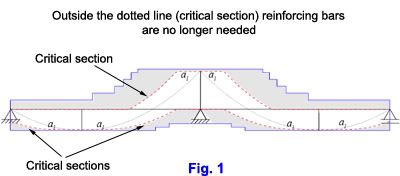Please bear with me on this. It was nine years ago when I had my first exposure to the STM, yet never use it until recently.
Referring to attached sketches, the compression force in the strut BC is a result of the tension in the tie AB. Now, we know that stresses in the tie decrease with the development length of the bar to zero after an ld length, yet the STM assumes constant bar stresses. Doesn’t that lead to wrong results? Is not the force in BC in sketch 2 zero, while the STM gives us a force= T(AB)/ cos theta2?
It appears that I am missing something here.


